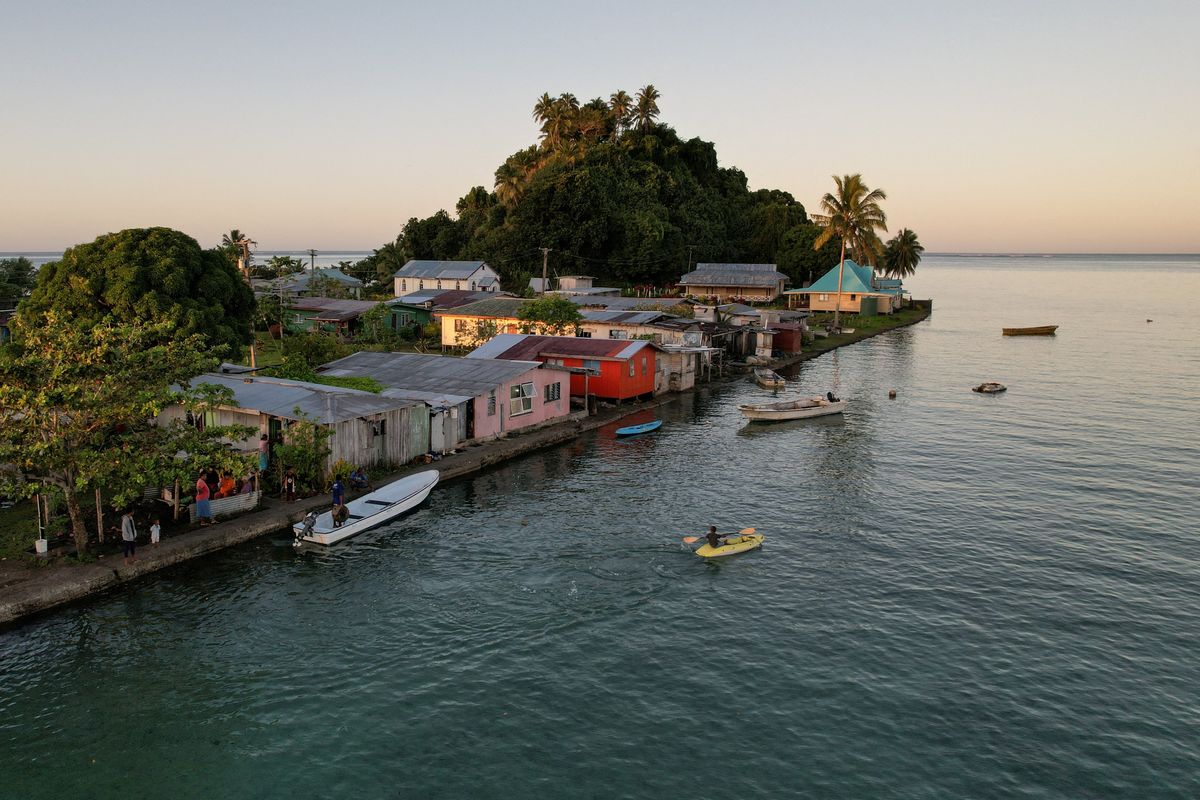A look at banks and debt-for-nature swaps
The Great Blue Wall project is a mission to protect the fragile ecosystems of the Indian Ocean.

A few minutes every morning is all you need.
Stay up to date on the world's Headlines and Human Stories. It's fun, it's factual, it's fluff-free.
The backstory: The Great Blue Wall project is a mission to protect the fragile ecosystems of the Indian Ocean. It started back in November 2021 during the COP26 climate summit in Glasgow. The idea is to protect 30% of the ocean within participating nations, all while focusing on biodiversity restoration and capturing at least 100 million tons of CO2 by 2030. Plus, it’s keen on promoting a sustainable ocean-based economy, which impacts at least 70 million coastal community residents. It’s targeting key areas, including mangrove swamps, seagrass meadows and coral reefs.
This initiative has some heavyweights backing it – big players like the International Union for Conservation of Nature (IUCN) and the UN are on board. The project’s even secured US$100 million in funding from contributors like IUCN and Irish Aid.
More recently: As this initiative picks up steam, banks involved are discussing how to fund it. They're tossing around ideas like bonds and something called debt-for-nature swaps, which are basically agreements where countries with debt restructure what they owe in return for a promise to protect the environment. Kenya, Tanzania and Mozambique are among the first to hop on this option.
These swaps have been catching on worldwide. Big banks like Credit Suisse and Bank of America have teamed up with the US nonprofit The Nature Conservancy and already pulled off some successful deals. They've refinanced over US$1 billion in debt for countries like Belize, Barbados and Gabon. Ecuador also got in on the action, swapping US$1.6 billion in bonds for a US$656 million loan dedicated to local conservation.
The development: The banks involved are getting more interested by the day. While they haven't sealed any specific deals yet, heavyweights like HSBC are brainstorming ways to back The Great Blue Wall alongside the IUCN.
But, some experts and climate activists are raising eyebrows about the costs and transparency of these debt-for-nature swaps. And the International Capital Market Association is questioning whether these bonds should still carry the "blue" label. Blue bonds are basically the marine equivalent of green bonds.
Key comments:
"Corals, mangroves and seagrasses are vital organs of the ocean. Like a human body, if you don't take care of those organs, the rest of the ocean will not survive," said Thomas Sberna, a regional head for Eastern and Southern Africa at the global conservation authority the IUCN.
"The ocean is extremely important to the climate, to the sustainability of the earth, its supply of food, protein to enormous numbers of people. We don't monitor it very well," said Ken Johnson, GO-BGC's project director and a senior scientist at the Monterey Bay Aquarium Research Institute (MBARI).
"Debt-for-nature swaps have been popular for the wrong reasons. And the main wrong reason is that they generate the impression that you can kill two birds with one stone, that you can address a debt problem and you can improve nature conservation," said Jeromin Zettelmeyer, director of Belgian think tank Bruegel.




Comments ()